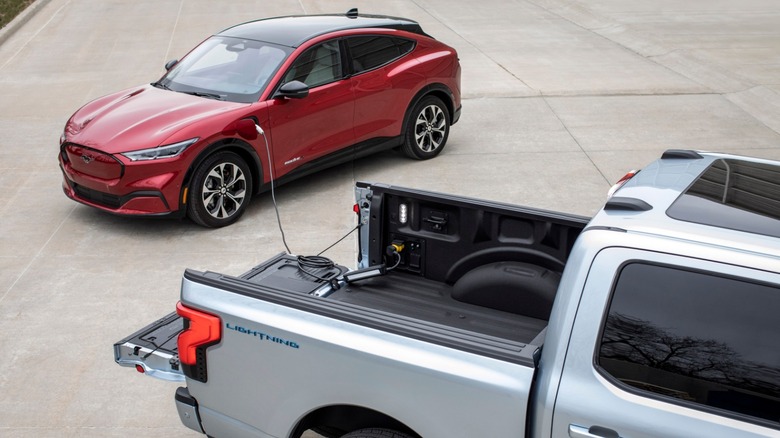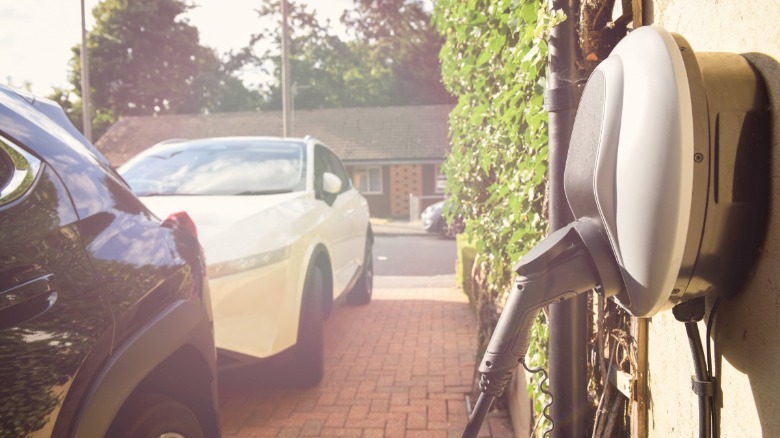How Many EV Owners Run Out Of Charge? The Number Might Surprise You
Between the snappy acceleration, near-silent ride, low maintenance cost, and wealth of tech trickery, it's easy to see why people are attracted to buying electric vehicles. That's not to say they don't have their issues. Many EVs are expensive, require frequent charging, and can have high maintenance costs. But none of that has slowed the growth of the EV market. As Elektrek points out, the U.S. percentage of EV sales hit 6.7% just in the first half of 2022. In 2019, that number was just 1.8%.
As electric vehicles charge headlong into the future, early adopters and auto-makers have both been learning a lot about the strengths and weaknesses of electric vehicles. Until very recently, range and range anxiety have been some of the biggest obstacles to the proliferation of electric vehicles. While the winds of change are blowing, thanks to initiatives by both private corporations and governments, the myth of getting stranded in the middle of nowhere because your car ran out of electrons persists. Does it hold any water, though? As it turns out, things look much more positive than you'd expect.
The majority of EV owners never even come close to empty
According to a study by Escalent, 64% of EV owners polled have never come close to running out of charge, while 28% say they have come close. Only 8% of EV owners have run out of charge completely. Furthermore, the research noted that 73% of owners expect to charge their electric vehicles at home. While this data is encouraging for EV owners, it's also indicative that range fear may be largely unwarranted.
Data from Visual Capitalist shows that average EV range has increased dramatically, from just 86 miles in 2011 to 217 miles in 2021. Still, SlashGear's own survey results showed 41.6% of people were concerned about the availability of public chargers. Even analysts at J.D. Power say that charging infrastructure is one of the biggest hurdles holding the EV industry back. However, a three-year study conducted by the Idaho National Laboratory found "despite the installation of extensive public charging infrastructure in most of the project areas, the majority of charging was done at home and work."
If EV owners are doing majority of their charging at home, and dead batteries aren't all that common, should industry giants really be focusing their efforts on public charger availability, or is in-home charging the way to go? The answer probably lies somewhere in the middle, since a combination of strong public charging infrastructure and access to in-home charging will cater to the largest variety of prospective EV owners and ensure maximum growth of the industry.

